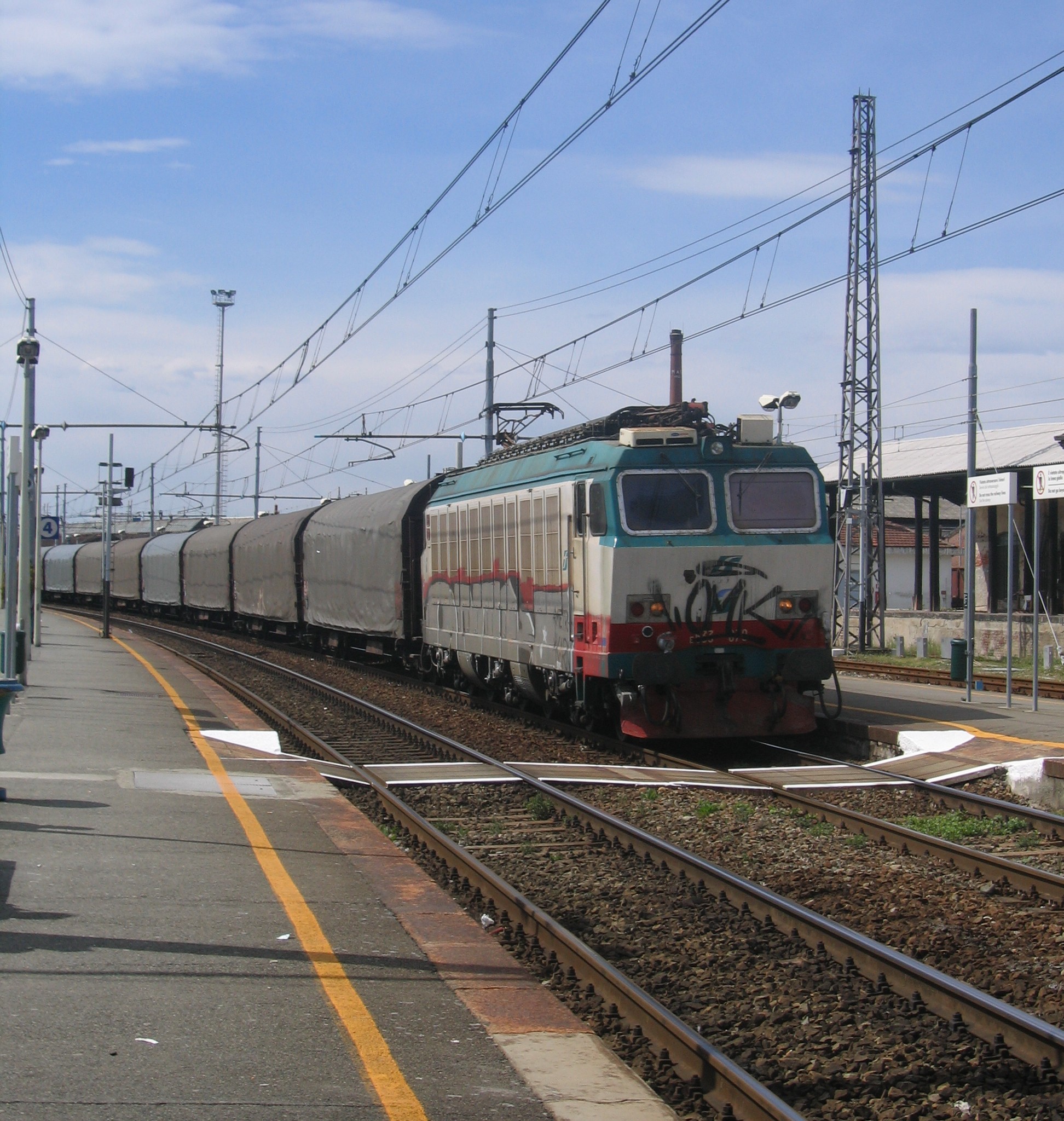- FS Class E632
Infobox Locomotive
name=FS class E632
electricsystem=3,000 V DC
tractionmotors=DC series
powertype=Electric

caption=An E632 heading a passenger train nearSanthià (2006)
builddate=1982-1987
builder=
weight=103 tons
uicclass=B-B-B
firstrundate=1982
disposition=In service
numinclass=65 [Plus one prototype]
wheeldiameter=1.040 m
poweroutput=4,200 kW
wheelbase=12,650 m between bogies
2.150 m between axles in each bogie
tractiveeffort=
topspeed=160 km/h
length=17.800 m
width=3.000 m
height=4.310 m
transmission=36/64 gear ratio
railroad=FS Trenitalia
nicknames= "Tigre", "Tigrone" (E652), "Tigrotto" (E620 FNM)
safety=RSC4;SCMT
Infobox Locomotive
name=FS class E633
powertype=Electric
electricsystem=3,000 V DC
tractionmotors=DC series

caption=An E633 with a cargo train in Santhià, 2006.
builddate=1979-1987
builder=
weight=103 tons
uicclass=B-B-B
firstrundate=1979
disposition=In service
numinclass=147 [Plus 4 prototypes]
wheeldiameter=1.040 m
poweroutput=4,200 kW
wheelbase=12,650 m between bogies
2.150 m between axles in each bogie
tractiveeffort=
topspeed=130 km/h
length=17.800 m
width=3.000 m
height=4.310 m
transmission=29/64 gear ratio
railroad=FS Trenitalia
TheFS E632 and E633 are two classes ofItalian railways electric locomotive s. They were introduced in the course of the1980s .The locomotives are nicknamed "Tigre" ("tiger").
History
The E632/E633 were the first Italian locomotives provided with electronic traction control system, in base of the experiments made with the E444.005 test locomotive. They were designed to fulfill a requirement from the
Ferrovie dello Stato (or FS, then the quasi-monopolist of Italian railways) for a new locomotive to be used with medium-weight passenger trains and a similar one for cargo services on steep lines.The first unit run on
October 11 1979 . After a troublesome program of tests with the first five prototypes, a first order for 90 engines (75 E633, the cargo version, and 15 E632) was issued. Regular services began in 1983 in northern Italy. Once the teething problems were solved, the class proved highly successful and reliable.Technique
Differently from many of the previous FS classes, the E632/633 carbody is not articulated. The power plant is made of three 1,635 kW FS T850 DC motors, mounted on single-engined
bogie s, each with two axles. Each motor is provided with a three-frequency chopper which takes place of the resistor network used on older Italian locomotives (rheostat). This allow the motors to run for an indefinite period of time without risks.
The two classes have different transmission gear: 36/64 for the E632, with a maximum speed of 160 km/h, and 29/64, with a maximum speed of only 130 km/h but a higher tractive effort.Since the beginning, all units were provided with the standard 78-wire cable for coupling with driving passenger cars, useful in the formation of commuter push-pull trains. 40 E633s were also fitted with a 13-wire ZDS cable ("comando multiplo") in order to allow hauling with multiple units by only one engine crew, from the "master" locomotive.The locomotives have, in addition to pneumatic brakes, a rheostatic braking system. The braking rheostat is placed on the roof, between the pantographs. Curiously, the air brake employs a mixed shoes-disc system (one shoe per wheel and one disc per axle), due to space issues about the motor placement; also, E632 have 10" brake cylinders, while E633 8".The chopper regulation and the rheostatic braking allow the driver to set an automatic speed control; the locomotive will try to keep the set speed by electrically braking or by tractioning if needed. This group has been the first in Italy that allowed this.
Other types
The E632/633 was used as base for the development of the E491/E492 locomotives for use with 25 kV ac lines in
Sardinia , which however were never mass built.Class E652 is a type of locomotive derived from E633/2. They unite the acceleration and hauling capacities of E633 with the speed of E632 (160 km/h); externally they are almost identical to E632/3, but the electrical part is very different. The first unit was built in 1989, and have been the first Italian locomotive with electronic board diagnostics and relative screen on the driver's desk.At this time, they are all assigned to the Global Logistic (Cargo) division of
Trenitalia , hauling freight trains, though sometimes can be seen hauling passenger trains (often long-range ones) on rescue services due to failures.The B-B locomotive E620 of
Ferrovie Nord Milano (nicknamed "Tigrotto") is a two-boogie version of the class.Footnotes
Wikimedia Foundation. 2010.
